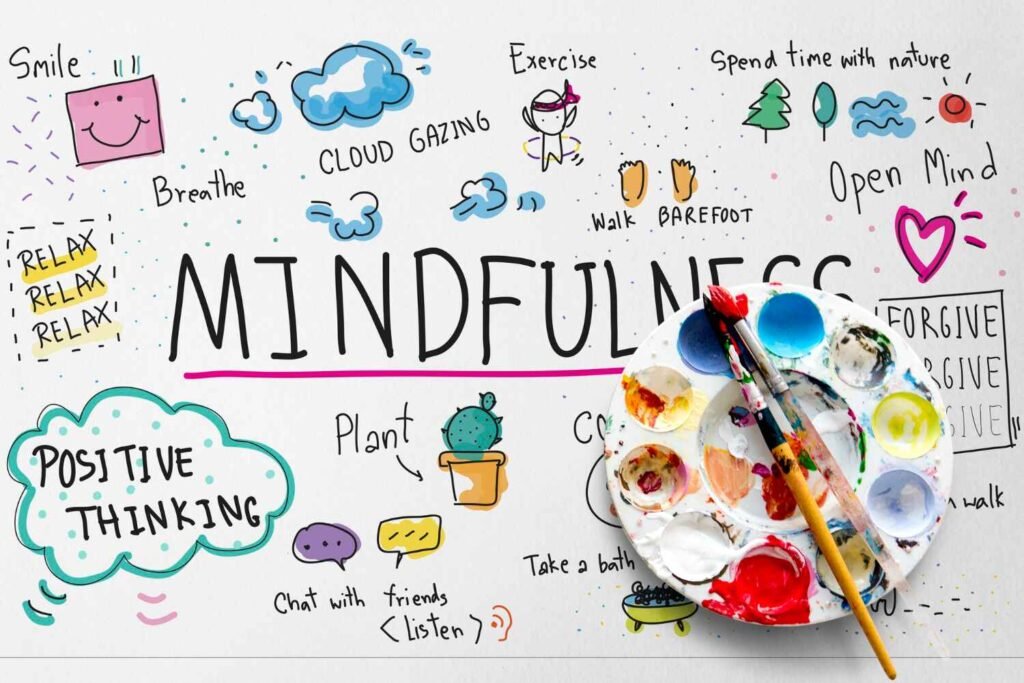
Introduction: What is Mindfulness, and Why Should You Care?
In today’s busy world, where distractions are constant and stress is almost inevitable, the practice of mindfulness offers a respite. Mindfulness is about cultivating awareness and living in the present moment. It’s not a magical solution to life’s problems, but it offers you the opportunity to engage fully in every moment, reduce stress, and improve overall well-being. Numerous studies have shown that regular mindfulness practice can reduce anxiety, lower blood pressure, and even increase happiness by altering brain function. Whether you’re seeking better mental clarity or just a few minutes of peace each day, mindfulness can be your sanctuary.
If you’re looking to start, this guide will introduce you to easy, beginner-friendly mindfulness techniques. You don’t need any special equipment, and you can practice at home, in the office, or even while sipping a cup of tea.
1. Why Start a Mindfulness Practice? The Science-Backed Benefits
Let’s kick things off by discussing why mindfulness matters. There are countless benefits associated with mindfulness practice, many of which are supported by scientific studies:
- Reduced Stress and Anxiety: Mindfulness meditation has been shown to reduce symptoms of anxiety and depression. It helps calm the brain’s “fight or flight” response, allowing us to relax more effectively. Whether it’s dealing with work stress, family issues, or everyday chaos, mindfulness gives you the tools to cope (source: Verywell Mind).
- Better Physical Health: Mindfulness isn’t just about mental clarity; it also helps the body. Research indicates that mindfulness can help regulate blood pressure, enhance immune system function, and even lower heart rates (source: Verywell Mind).
- Improved Sleep Quality: Poor sleep is often caused by an overactive mind. Mindfulness practices, like focusing on the breath, help quiet mental chatter, which leads to better and deeper sleep (source: Verywell Mind).
- Enhanced Emotional Regulation: Mindfulness meditation can increase activity in parts of the brain associated with happiness and emotional control, allowing practitioners to respond to negative emotions in a healthier way (source: Verywell Mind).
2. Getting Started: Creating Your Mindfulness Space
The first step towards starting a mindfulness practice is to create a dedicated space for it. While mindfulness can be practiced anywhere, setting aside a specific location in your home helps to create a mental association with calmness and introspection.
- Find a Comfortable Spot: It doesn’t need to be a whole room—just a quiet corner will do. This space should be free from distractions such as your computer or television. If you can, add a comfortable cushion, a blanket, and perhaps a few personal touches like a candle or plant (source: Psychology Today).
- Maintain Proper Posture: Sitting upright is important for effective mindfulness. If you’re using a chair, make sure your feet are flat on the ground, and your back is straight but not stiff. You can also use a cushion (zafu) if sitting on the floor feels more natural. The key is to be comfortable yet alert, a posture that embodies the balance between relaxation and awareness (source: Psychology Today).
3. Informal Mindfulness Techniques to Practice Daily
Formal meditation isn’t the only way to cultivate mindfulness. There are informal practices that can be integrated into your daily routine—perfect for beginners.
- Mindful Showering: Instead of thinking about your to-do list, try focusing on the sensations of taking a shower. Feel the warmth of the water, the scent of the shampoo, and the sound of the droplets hitting the floor. Every time your mind wanders, gently bring your attention back to the present moment (source: Psychology Today).
- Mindful Eating: Eating can become a wonderful mindfulness exercise. Pick a small snack—like a strawberry—and take time to notice its color, texture, and aroma. Slowly savor each bite, noticing the taste and how it changes as you chew. By slowing down, you can enhance your connection to the present moment and enjoy your food more deeply (source: Psychology Today).
- Mindful Walking: Walking mindfully means being aware of each step you take. Feel your feet as they touch the ground, listen to the ambient sounds around you, and observe your surroundings without judgment. A simple walk around your neighborhood can turn into a meditative experience if you remain fully present (source: Psychology Today).
4. Formal Mindfulness Meditation: Techniques for Beginners
Once you’ve got the hang of informal mindfulness practices, you can introduce some formal techniques to deepen your practice.
4.1 Basic Breathing Meditation
- Find a comfortable place to sit—either on a cushion or in a chair.
- Focus on your breath. Notice the sensation of the air as it moves in and out of your nostrils, or feel your belly rise and fall with each breath.
- As thoughts arise, acknowledge them without judgment and gently bring your attention back to the breath (source: Verywell Mind).
4.2 Body Scan Meditation
- Lie down or sit comfortably.
- Gradually bring your awareness to different parts of your body, starting from your toes and working up to your head.
- Notice any sensations without trying to change them. Simply observe and acknowledge each part of your body, and let go of tension where possible (source: Verywell Mind).
4.3 Guided Meditation with Apps
If meditating on your own feels daunting, guided meditation apps like Headspace or Calm can provide structured sessions. These apps are perfect for beginners, offering step-by-step guidance that helps you stay focused (source: Verywell Mind).
5. Building the Habit: How to Keep Going
Consistency is key when it comes to reaping the benefits of mindfulness. Here’s how to make it a lasting habit:
- Start Small and Gradually Increase: Begin with just 5 minutes a day, which you can then increase gradually to 10, 15, and eventually 20 minutes or more. This approach helps make mindfulness a manageable and enjoyable part of your day (source: Psychology Today).
- Use a Timer: Set a timer with a gentle alarm, so you don’t have to worry about checking the clock. This allows you to immerse yourself fully in your practice without the distraction of time (source: Verywell Mind).
- Pick a Consistent Time: Establishing a routine helps solidify the habit. Whether it’s first thing in the morning, during lunch, or before bed, choose a time that works for you and stick to it (source: Verywell Mind).
6. Common Challenges and How to Overcome Them
Mindfulness isn’t always easy, especially for beginners. Here are some common obstacles and ways to deal with them:
- Restlessness: It’s normal for your mind to resist the idea of sitting still. Observe the restlessness without judgment, and gently return your focus to your breathing. Remember, mindfulness is about being present with whatever arises, even discomfort (source: Verywell Mind).
- Sleepiness: If you find yourself dozing off, try meditating at a time when you’re more alert or choose a seated posture instead of lying down. You can also keep your eyes slightly open and focus on a point in front of you (source: Verywell Mind).
- Doubt and Frustration: Beginners often wonder if they’re “doing it right.” The truth is, there’s no right or wrong in mindfulness. The practice is simply about showing up, observing what happens, and letting go of the need to perfect it. With time, you’ll start to notice the effects, such as greater calm and focus (source: Psychology Today).
7. Taking Mindfulness Further: Introducing Formal Practices
- Concentrative vs. Non-Concentrative Meditation: You can explore different types of meditation, like concentrative meditation, where you focus on an external object (like a candle flame), or non-concentrative, where you observe bodily sensations and sounds (source: Verywell Mind).
- Spiritual Meditation: For those interested, spiritual meditation involves focusing on questions or concepts to gain deeper insight. It can be a part of a religious tradition or a personal exploration (source: Verywell Mind).
8. Bringing Mindfulness into Daily Life
Mindfulness can extend beyond formal sessions into everything you do:
- Mindful Brushing of Teeth: Feel the bristles against your teeth, the sensation of your hand moving, and the taste of the toothpaste.
- Mindful Driving: Turn off distractions and focus on your surroundings. Notice the road, the feel of the steering wheel, and the rhythm of your breathing (source: Verywell Mind).
Conclusion: Just Begin, Exactly As You Are
The beauty of mindfulness is that it doesn’t demand perfection—just practice. Whether you’re mindfully sipping tea or sitting for a 20-minute meditation session, the goal is to be present and compassionate with yourself.
Remember, mindfulness is a journey, and every moment you dedicate to it brings you closer to a more present and peaceful version of yourself. There is no rush, no right or wrong. Start where you are, and gradually build from there. You’re ready to begin—just as you are.



